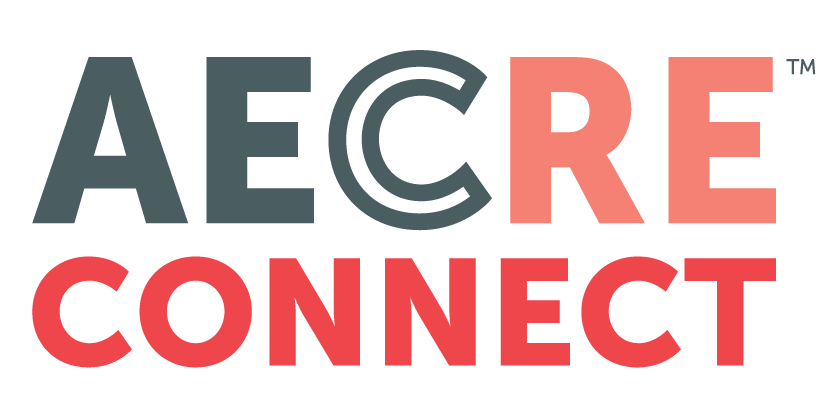Read the original article from ArizonaEconomy.com, a product of Elliott D. Pollack & Company, here.
The Monday Morning Quarterback
A quick analysis of important economic data released over the last week
Sometimes it is difficult not to become skeptical. While I tend to be optimistic and believe that
the current situation will, after some more trial and error, end and that the economy will improve
quickly at first and then slowly, I read some things last week that leave me shaking my head in
utter amazement. And not in a good way. The first was the second part of what will be a three
part study on “How the March-April COVID-19 surge overwhelmed Dutch hospitals and
undermined regular care”. It is, I believe, a credible study that brings to light some issues that
have been talked about only tangentially. And, I recognize that we know a lot more today than we
did in March. But, I believe the study is so profound and implies so much for what happened to
our health system during that time, that it should be a major topic of discussion that results in an
entirely different approach by the health care system. This is because the current approach is, well,
not working.
The first of the three studies were completed in March. It was a study of the Dutch Health Care
System. It indicated that regular (non-COVID-19) medical care was severely impacted by COVID
care in hospitals and across other forms of care. The study stated that up to 40% of regular care
was not being delivered.
The second study was dated in May of 2020. This study delved deeper. The conclusions were
that, “The COVID care response in the Netherlands has led to a gain of 13-21 thousand healthy
life years. However, this gain came at an unacceptable loss in regular care” Regular care, as it
turns out, suffered and was the unintended collateral damage. “The loss of healthy life years due
to the reduction in regular care resulting from the COVID epidemic is estimated to be 100-400
thousand in the Netherlands.” You read that right. Saved-13,000-21,000 life years. Lost-100,000-
400,000 life years. That’s a loss of 9-20 life years for every one saved! In addition, the report
states that COVID has driven up regular hospital unit costs by 40%. That brings the true cost of
COVID care per heathy life year gained to $100,000-$250,000 Euros. And this doesn’t take into
account the costs of isolation such as higher rates of suicide, drug and alcohol use, domestic
violence, loss of self-esteem, etc.
In the third study, solutions to mitigate the costs and loss of life years in terms of treatment
scenarios and implications will be covered. That should be interesting as well. It obviously can’t
come too soon. Overall, the total lack of coverage of this topic by the media is disturbing. We
appear to be going down the wrong road to the detriment of those that need regular care. If the
ratio of life years saved to life years lost in the U.S. is anything like the experience in the
Netherlands, things need to be changed and changed fast. Perhaps the entire approach should be
revisited. Perhaps it is simply a matter of protocols. Whatever it is, we need to know fast.
This is especially true since it appears that much of the U.S. could be headed to a second Stay at
Home order. This time, we need to have a better way of dealing with those who have regular
hospital needs.
By the way, a second shutdown will, as we mentioned last week, have very negative effects on the
economy in terms of the ultimate speed of a recovery at the other end of this. There will be fewer
small businesses reopening. More businesses of all sizes will face bankruptcy and ongoing
financial difficulty. And larger businesses will start to treat what was considered a temporary
situation as more permanent. This will result in the downsizing of staff. Not a pretty picture. This
doesn’t mean that the initial recovery won’t be rapid. It will. There is simply too much pent-up
demand for it not to be. But that will peter out, and the recovery will take longer than it otherwise
would have.
This brings us to other information about the effect the prolonged nature of COVID-19 is having
on the economy. A survey from Apartment Lists indicated that 32% of Americans did not make
a full on-time housing payment in July. That is not good news. This includes millions or renters
and homeowners already in deferment and forbearance plans. What happens at the other end?
Well, for homeowners, the amount owed will probably be added to the end of the mortgage. That
might affect payment amounts a little. But, for renters, the issue is different. There is no mortgage
to add it on to. If they can’t pay now, how will they pay later? As Rodney Johnson said,
“Someone’s missed payment is another person’s missed income.” As Milton Friedman was fond
of saying, “There’s no such thing as a free lunch”.
This is exacerbated by the fact that the CARES Act runs out this week. Congress will probably
not have an agreement of what spending program will follow. That will take a couple of more
weeks. The Dems want to throw $3.5 trillion at the next round. That includes money for those
who got some under the CARES Act. It also includes $1.5 trillion to cities and states that in part
rewards past bad behavior. The Republicans want to reward people more for going back to work
and don’t provide for local governments. Keep in mind that this is an election year. The average
person will not be forgotten.
Finally, lenders are starting to play the “extend and pretend” game. The forbearance agreements
that lenders and borrowers are entering into for all sorts of debt (mortgages, rent, credit cards, auto
loans) create a situation where the default numbers are way understated. In a forbearance
agreement, lenders agree not to repossess a car, for example, as long as the borrower sticks to the
terms of the new agreement. This usually means deferred or at least lower payments with the rest
to be dealt with at some future point. This is great (wink-wink). And for the borrower, the loan is
then considered “current” on the lenders books even if it was delinquent before.
In addition, a loan isn’t considered delinquent in the first place unless it was 60-plus days
delinquent. All of this causes delinquency rates to be understated and sends a false signal about
what is really going on in the economy. What will ultimately happen with these agreements and
to those who have deferred their rent, even though they might have been collecting unemployment
checks that exceed their employment salary, remains to be seen. But, the ending to this story is
unlikely to be a happy one.
As for economic data, initial claims for unemployment insurance rose (not a good thing). Leading
indicators were modestly up. Mortgage applications rose. New home sales did well while existing
home sales were down (mainly due to lack of supply). In Arizona, initial claims were still high
but were moving in the right direction. And, not surprisingly, lodging performance improved from
May but was still down a lot from a year ago.
U.S. Snapshot:
• Initial claims for unemployment insurance increased for the week of July 18 to 1,416,000
from 1,307,000 the previous week. Initial claims now stand 571.1% above year earlier
levels. The increase reflects the reversal of reopening plans in several states. Initial
claims since mid-March now exceed 52 million. That represents 34.9% of March
employment levels.
• Leading indicators rose in June; but the recovery remains on shaky ground. The
Conference Board’s index of leading indicators rose to 102.0 compared to 100.0 in May.
Leading indicators point to a weak recovery. The outlook, though, is now fraught with
risk given recent economic events.
• Mortgage applications rose 4.1% over the week of July 17th after a 5.1% increase in the
previous week. Following weeks of volatility, applications seem to be normalizing.
However, the reversal of openings in many states will test the strength of the housing
market. Low interest rates, positive demographics, the movement of people away from
crowded cities to less crowded cities and suburban locations, supportive monetary and
fiscal policies and lack of resale inventory suggest that the housing market will stay
strong.
• The National Association of Realtors reported that the seasonally adjusted annual rate of
existing home sales rose on a month to month basis in June. Single family sales were up
19.9% compared to May but were down 9.9% from June 2019. The low level of existing
resale inventory in many regions of the country have pushed potential purchasers to new
homes. In that regard, new home sales, (about 10% of the total housing sale market)
have returned to pre-COVID-19 levels. The June numbers were up 13.8% from May and
6.9% from year earlier levels. It remains to be seen if this lasts. But, as described above,
low interest rates, the shift of population from densely populated urban centers to the
suburbs in search of a higher quality of life and an inability of home builders to create
excess supply, all work in favor of a continuation of a strong new home market.
Arizona Snapshot:
• Initial claims for unemployment insurance in the State fell to 22,380 last week from
28,695 the previous week. Initial claims are still 392% above a year ago. The total
number who claimed initial benefits since mid-March was 805,564. This equaled 27.0%
of the mid-March employment level in the state.
• Hotel occupancy across Arizona continued to recover in June. But, the occupancy level
was down 26.3% from a year ago.



